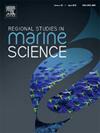Inland port ranking analysis considering port efficiency for sustainable port development: A case study
IF 2.1
4区 环境科学与生态学
Q3 ECOLOGY
引用次数: 0
Abstract
Inland ports are important facilities for transferring cargo to the seaport along the New Maritime Silk Road. Inland port ranking will affect the port development decisions. This paper explores the inland port ranking along the Yangtze River considering the port efficiency. Firstly, we adopt the Data Envelopment Analysis (DEA) method to calculate the port efficiency, which is considered one of the seventeen indicators for inland port ranking. Secondly, Analytic Hierarchy Process (AHP) and the entropy method are used to calculate the subjective and objective weights of the indicators for determining their relative importance. Finally, the technique for order preference by similarity to ideal solution (TOPSIS) method is developed to calculate the inland port ranking. This paper did a case study by adopting five major inland ports along the Yangtze River, which are Wuhan, Jiujiang, Yueyang, Yichang, Huangshi, and Jingzhou ports. The evaluation results were analyzed in depth to identify each port's strengths and weaknesses. Based on these analyses, solutions and recommendations are proposed for ports with purely technical inefficiencies, input redundancy and output shortfall, as well as management insights for sustainable port development.
求助全文
约1分钟内获得全文
求助全文
来源期刊

Regional Studies in Marine Science
Agricultural and Biological Sciences-Ecology, Evolution, Behavior and Systematics
CiteScore
3.90
自引率
4.80%
发文量
336
审稿时长
69 days
期刊介绍:
REGIONAL STUDIES IN MARINE SCIENCE will publish scientifically sound papers on regional aspects of maritime and marine resources in estuaries, coastal zones, continental shelf, the seas and oceans.
 求助内容:
求助内容: 应助结果提醒方式:
应助结果提醒方式:


